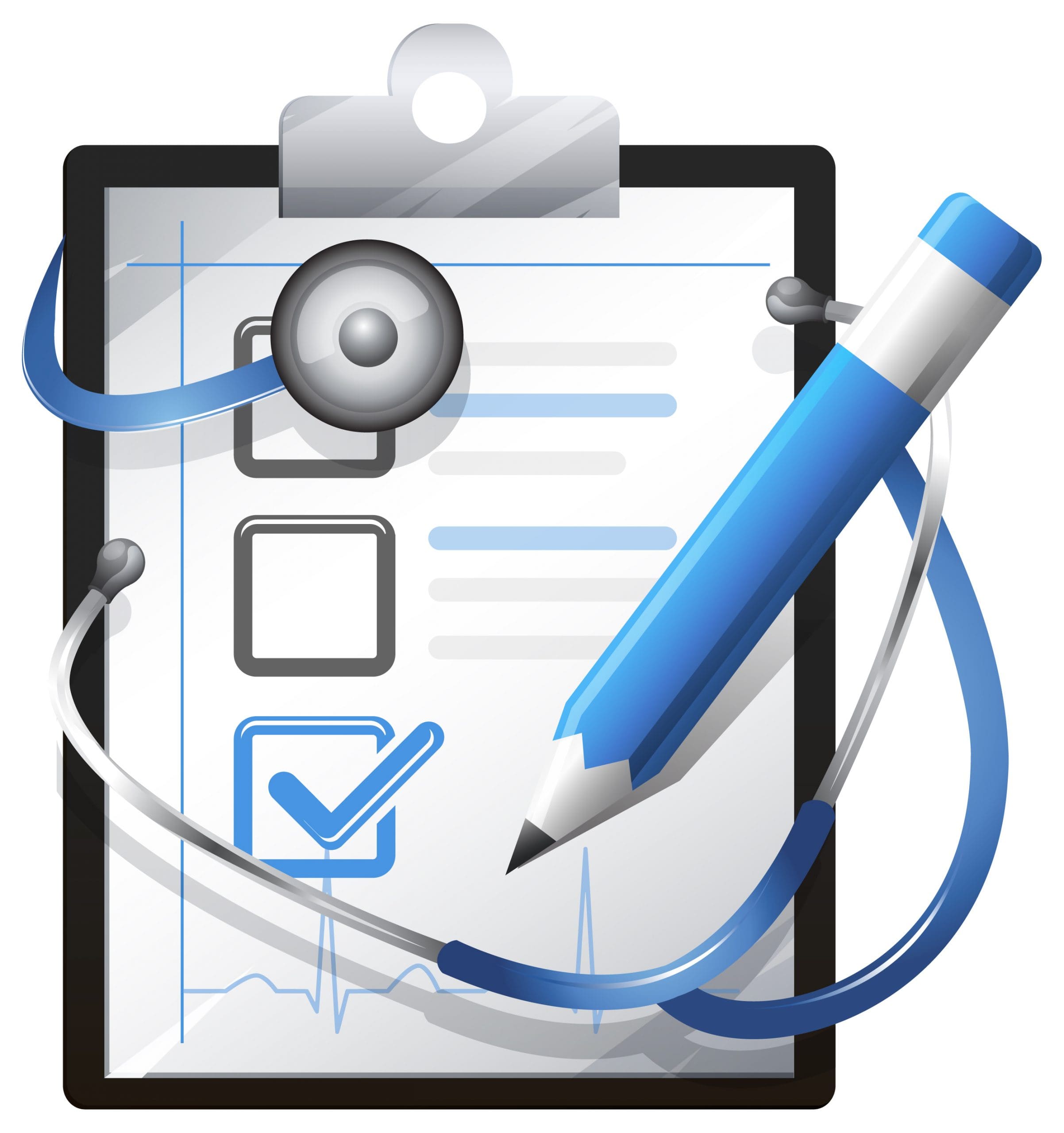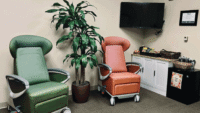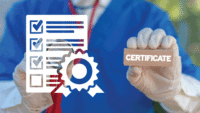Onboarding program designed to reduce turnover, increase morale, and improve care.
Takeaways:
- Challenges faced within care management at Beaumont Health’s eight acute-care campuses included navigating within the complexities of the payer and healthcare systems and managing the variation of roles and responsibilities among care managers, social workers and utilization reviewers across the Beaumont Health system.
- A standardized approach to centralize and decentralize learning and creatively address the lack of consistent education and orientation was needed.
- This goal was to retain and motivate staff, decrease turnover, increase productivity, improve morale, and positively impact patient outcomes.
The eight care management departments at Beaumont Health, a nonprofit healthcare organization in Michigan with 3,429 beds and 187 outpatient sites, were facing several challenges related to the complexities of navigating the healthcare and payer systems, as well as internal role and responsibility variations among care managers, social workers, utilization reviewers, and support staff. Questions included: Does the care management team truly understand the “why” behind what they do and what the payer requires? How are staff balancing being patient advocates and fiscally responsible members of the organization?
Editor’s note: This article will appear in an upcoming issue of American Nurse Journal.
Answers to these questions would help support department priorities, address concerns about care management function intricacies, and develop a foundational understanding of what the departments do and why. The organization had a decentralized new employee orientation process that included checklists, preceptors, and observation within individual care management departments, but no organization-wide centralized process existed. The Beaumont Health care management team believed both a centralized and decentralized approach would help retain and motivate employees, decrease turnover, increase productivity, improve staff morale, facilitate learning, and reduce new employee anxiety. This article describes our approach.
Setting the stage
Healthcare systems in the United States have evolved rapidly over the past 30 years to include Title XVIII and XIX, diagnosis related groupings, International Statistical Classification of Diseases and Related Health Problems/Current Procedures Terminology (ICD/CPT) codes, and the Affordable Care Act. In addition, each patient requires detailed analysis to determine payer approval and regulatory adherence. Length of stay, readmissions, hours in observation, delivery of notices to patients, and auditing risks all fall under the purview of care management.
At Beaumont Health, care management was locally operated at each of the eight acute-care sites with no coordination from a central model. In April 2018, a corporate care management department was established to help raise the education standard within the individual sites. In meetings with the eight care management departments, some staff expressed a novice understanding of basic care management concepts even though they had 4 to 5 years of experience, demonstrating Benner’s novice-to-expert model, which proposes the need for combination a strong educational foundation coupled with personal experiences; a nurse may have the skills (“knowing how”) but not know or understand the theory (“knowing that”). To establish a foundation for understanding the complex world of care management and build staff expertise, the corporate team developed a formal education program with a three-pronged approach—corporate onboarding, competency training, and certification.
Onboarding
Creating a customized central approach to orientation was a 3-month journey. I created a draft of the corporate onboarding program and presented it to care management leadership and staff to obtain feedback on content and flow. Based on their suggestions, the program evolved into two 4-hour sessions offered each month for new care management hires. Part 1 addresses the history of healthcare, national and local care management standards, the patient experience, and communication techniques. Part 2 focuses on compliance and regulatory requirements and care transitions. Internal experts developed information about the revenue cycle, financial clearance, motivational interviewing, patient choice, and patient experience.
Session format
All new care management leaders, care coordinators, social workers, utilization managers, data analysts, and support staff are invited via email to attend the mandatory onboarding sessions, which are taught by the care management educator and site leaders using an interactive approach with videos, case scenarios, and open discussion. Each attendee takes a quiz at the beginning of each part to assess baseline knowledge and again at the end to determine comprehension and effective material presentation. Throughout the two parts, participants watch videos with Beaumont Health care management staff describing their roles and the work they do. The videos add a personal touch that recognizes the team’s important work.
At the end of each part, attendees complete an evaluation to rate the value of the material and provide comments. This feedback is used to update training materials.
In addition to attending the two-part onboarding training, all new care management leaders meet with the corporate care management team to learn about the department website and electronic health record dashboards and navigation. Each new leader is paired with a leader colleague at another acute-care site for additional training and observation; an extensive checklist is used for tracking purposes. After 90 days, the new leader meets with the corporate care management team again to review and assess for additional educational needs and support.
Competency training and certification
Ongoing competency training is used to meet care management team member continuing education needs. Online competency training is provided to meet care management team member continuing education needs. Care management, social work, and utilization review staff are required to complete five online modules; physician advisors must complete all modules for baseline competence.
A certification review course was hosted by the American Case Management (ACM) Association in the fall of 2019 to continue to improve and enhance care management service delivery and professionalism. The course may be offered on an as-needed basis going forward. According to the National Hospital Case Management Survey, 47% percent of ACM-credentialed professionals indicate that certification has increased their professional knowledge and competency. Beaumont Health encourages certification, but it’s not a requirement.
Positive feedback
Since the launch of the new onboarding program in January 2019, outcomes data have been assessed via evaluation feedback (4-month average is 91%; the average is obtained by scoring each evaluation question’s response per class and then averaging the total class score over each month). Comments have been positive, noting an increase in staff compliance and regulation knowledge, communication techniques, and scope of practice. A follow-up survey is sent to attendees via email 60 days after onboarding classes to ascertain application of material shared in both classes; 70% to 80% of respondents rate the use of content as extremely to somewhat helpful in their day-to-day work.
Future outcomes will be measured based on employee satisfaction, patient satisfaction, and employee turnover data.
See Care management onboarding tools for resources that can help in developing an orientation plan.
Use Beaumont Health’s care management onboarding program tools as a basis for your organization’s new employee orientation plan.
Care management leader orientation checklist. As part of care management leader onboarding, new leaders are paired with an experienced colleague who provides training and observation using a detailed tracking checklist.
Care management onboarding class schedule. The Beaumont Health care management onboarding class schedule includes brief descriptions of the sessions; dates, times, and locations for each class; and contact information.
Care management onboarding evaluation. At the end of each of the two onboarding sessions, participants complete an evaluation. They rate different aspects of the sessions and provide feedback about what they found most helpful and where improvements might be made.
Care management onboarding session pre- and post-quiz. Attendees take a quiz before each session starts to establish their baseline knowledge and another quiz at the end to assess their comprehension.
Diane DiFiore is the director of care management development and education at Beaumont Health in Southfield, Michigan.
References
Allen M. Hospital system encourages and supports certification in case management. Collaborative Case Management. 2019;68:21-22. acmaweb.org/uploads/pubs/84/CCM_–_Issue_68_Final.pdf
Benner P. From novice to expert. Am J Nurs. 1982;82(3):402-7.
Ragsdale MA, Mueller J. Plan, do, study, act model to improve an orientation program. J Nurs Care Qual. 2005;20(3)268-72.
Click here for Beumont’s Care Management Orientation list.
Orientation Checklist
| Leader information
Name: Position: Start date: Area: Reports to: | |||
| Date | System classes | Comments | |
| New employee orientation
Human resources site orientation
Care management leader corporate orientation (4 hours)
Care management onboarding part 1 (4 hours)
Care management onboarding part 2 (4 hours) | |||
| Date | Site topics | Comments | |
| Care management department overview: o Organizational chart o Hospital contacts o Hospital department directory o Nursing directory o Meet and greet o BH care management committee structure o Department cost centers (list) o Team huddles/rounding o Round with each manager o BH and site care management meeting schedules o Other hospital required meetings | |||
| Care management department housekeeping: o Office/desk/workstation o Business cards o Computer access (Outlook, Epic, Allscripts, etc.) o Office supplies o Picture ID badge o Keys o Care management department pager numbers o Copy machine access o Mail (incoming/outgoing) o Shipping (FedEx, DHL, and UPS) o Purchase requests o Telephones/pager o Voice messaging o Scheduling meetings/conference room locations o Skype meeting o Shared drive access o Web access to payers o Other web sites: 1. ACMA Learning Link 2. RACmonitor/Monitor Mondays 3. CMS.gov 4. Google 5. BH intranet | |||
| Departmental policies: o Review key policies o Department compliance program o Compliance audits o Compliance coordinator o Internet and email use o Dress code (business casual) o Performance reviews o Employee files o Professional conduct standards o Vacation and sick leave o Holidays o Security/confidentiality o Emergency procedures o Vendor relations o Medicare appeals process o KEPRO | |||
| Site/system introductions: o Human resources director o Human resources employment representative o Service excellence o Chief nursing officer o Vice president of finance o Security o Quality o Employee assistance o Recipient rights officer (where applicable) o Corporate senior director insurance o Corporate vice president of care management o BH site care management directors | |||
| Care management department Information: o Get introductions to team, staff meeting o Review roles, job assignments, and training expectations o Review job descriptions, performance expectations, and standards o Review job schedule and hours o Review payroll timing, policy, and procedures o Committee participation, such as: o Complex case meeting o UM committee o Magnet® o Education committee o Service excellence o Readmissions committee o Shared governance | |||
| Management coverage/schedules: o Vacation time off o Weekend coverage o Hours of coverage o Coverage expectations Staff schedules: o Vacation submission o Work schedule submission dates o Switching days Clerical expectations o Documenting changes, call-ins, etc. o Employee attendance cards o Employee files o LOA, FMLA o Return-to-work slips
Managing areas of responsibility (if applicable): o Meet and greet staff o Structure/expectations o Communication techniques o Reviewing productivity and competency o Scheduled meetings with new staff, preceptor, and reporting supervisor o Shadow staff and reporting supervisor o Crucial conversations o Counseling, corrective action, documentation, and performance plan o Orientation checklist o Payroll system o Employee injury/illness form o Posting positions o Job offers o Navigating the organization o EAP o Mandatory online competency modules o Other | |||
| Leader expectations: Daily o OPPM reports o LOS report o Unit census for readmissions o Unit discharge rounds o Site safety meeting o Other
Weekly o Corporate and site leader meetings o Leader rounding o Audits as needed o Hospital patient satisfaction meeting o Other
Monthly o Case management staff meeting o Corporate and site UM meeting o Other | |||
| IT resource/support: o IT data site technician o IT contact/service request o Help desk o Hardware and software reviews including: 1. EPIC One Chart (Reports, bed status, WQ, etc.) 2. Allscripts 3. RL Solutions (complaint/compliment management system) 4. Email (Microsoft Outlook) 5. Microsoft Office 6. Intranet 7. Internet 8. Shared drives 9. Care management website 10. Position manager | |||
|
| Appeals: o Medical record request o Quality director o Discharge appeal determination letter o Work queues (list) o Billing indicators o Back-end conversions o Combining accounts o No authorization write-off report o DMAT meeting · Shared drive · Trends · Action items o Revenue cycle · Hospital billing revenue cycle dashboard · Candidate for billing · Claim edits/DNB · Error by owning area · High $ amount w/1DNB | ||
| Electives: o Prior authorizations o CMS IP-only list o Surgical boarding o Conversion audits | |||
| Observation team: o OPPM census o Monthly OPPMs o Medicare OPPM audit o CMS short-stay IP audit | |||
| Utilization review: o Corporate UM meeting o Site UM meeting o UM plan o UM committee rules o PA process o CMS COP o Medical necessity/IQ/IP only | |||
ACMA = American Care Management Association; BH = Beaumont Health; CMS = Centers for Medicare and Medicaid Services; COP = Conditions of Participation; DMAT = Denials Management Action Team; DNB = do not bill; EAP = employee assistance program; FMLA = Family and Medical Leave Act; IP = inpatient; IQ = InterQual; IT = information technology; LOA = leave of absence; LOS = length of stay; OPPM = outpatient payment method; PA = Physician Advisor; RAC = Recovery Audit Program; UM = utilization management; WQ = Work Queue
New leader signature: ________________________________ Date:________________
Preceptor signature: __________________________________ Date:________________
Reporting leader signature: _____________________________Date:________________
NOTES:
Onboarding Evaluation
| Beaumont Health Care management onboarding evaluation | 1 | 2 | 3 | 4 | 5 | N/A | ||
| Strongly disagree | Disagree | Unsure | Agree | Strongly agree | Not applicable | |||
| Date:
| Part 2: Compliance | |||||||
| Name (optional):
| ||||||||
| 1. | The speaker was knowledgeable and gained my attention through evidence and examples to engage me in the learning.
| |||||||
| 2. | I gained a better understanding of Medicare and Medicaid.
| |||||||
| 3. | Learning about the regulations pertaining to the Conditions of Participation, Observation, Inpatient, and Outpatient was valuable and important.
| |||||||
| 4. | The “Test Your Knowledge” questions were helpful and provided a good break between the content presented.
| |||||||
| 5. | The videos provided a personal example of how our care management team members work.
| |||||||
| 6. | After participating in the care management onboarding session, I have a better understanding of the compliance regulations and expectations.
| |||||||
| 7. | Please list the best feature/part of this onboarding session. | |||||||
| 8. | What would you add or change? | |||||||
| 9. | Please list two ideas, behaviors, or practices you will apply from this information. | |||||||
True/False
____Medicare Part D covers inpatient hospital stays, skilled nursing facility stays, some home health visits, and hospice care.
____Medicare was established by Title XIX of the Social Security Act in 1965 to provide medical assistance to certain low-income needy individuals and families.
____The Two-Midnight rule applies to a patient who is admitted as an inpatient based on the expectation that the patient will need hospital care that crosses at least two midnights.
____The MOON was developed to inform all Medicare beneficiaries when they are an outpatient receiving observation services.
____The Important Message from Medicare (“IM”) is used to inform beneficiaries of their hospital discharge denial rights.
____The 5 rights to utilization review are the right patient, right care, in the right setting, with the right documentation, ensuring the right billing and payments.
____Hospice focuses on caring, not curing and in most cases care is provided in the patient’s home.
____Beaumont’s policy is to not honor the patient’s choice for home care, nursing home care, home infusion, hospice, and durable medical equipment, unless otherwise indicated for specific clinical reasons.
Identify front (F), middle (M), or back (B) of the revenue cycle below.
____Ensure complete documentation for medical necessity and appropriately reflect acuity and comorbidities.
____Verify insurance and authorization requirements.
____Identify denial root cause and prevention strategies.
True/False
_____Medicare Part D covers inpatient hospital stays, skilled nursing facility stays, some home health visits, and hospice care.
_____Medicare was established by Title XIX of the Social Security Act in 1965 to provide medical assistance to certain low-income needy individuals and families.
_____The Two-Midnight rule applies to a patient who is admitted as an inpatient based upon the expectation that the patient will need hospital care that crosses at least two midnights.
_____The MOON was developed to inform all Medicare beneficiaries when they are an outpatient receiving observation services.
_____The Important Message (IM) from Medicare is used to inform beneficiaries of their hospital discharge denial rights.
_____The 5 rights to utilization review are the right patient, right care, in the right setting, with the right documentation, ensuring the right billing and payments.
_____Hospice focuses on caring, not curing and in most cases care is provided in the patient’s home.
_____Beaumont’s policy is to not honor the patient’s choice for home care, nursing home care, home infusion, hospice, and durable medical equipment, unless otherwise indicated for specific clinical reasons.
Identify front (F), middle (M), or back (B) of the revenue cycle below.
____Ensure complete documentation for medical necessity and appropriately reflect acuity and comorbidities.
____Verify insurance and authorization requirements.
____Identify denial root cause and prevention strategies.

















